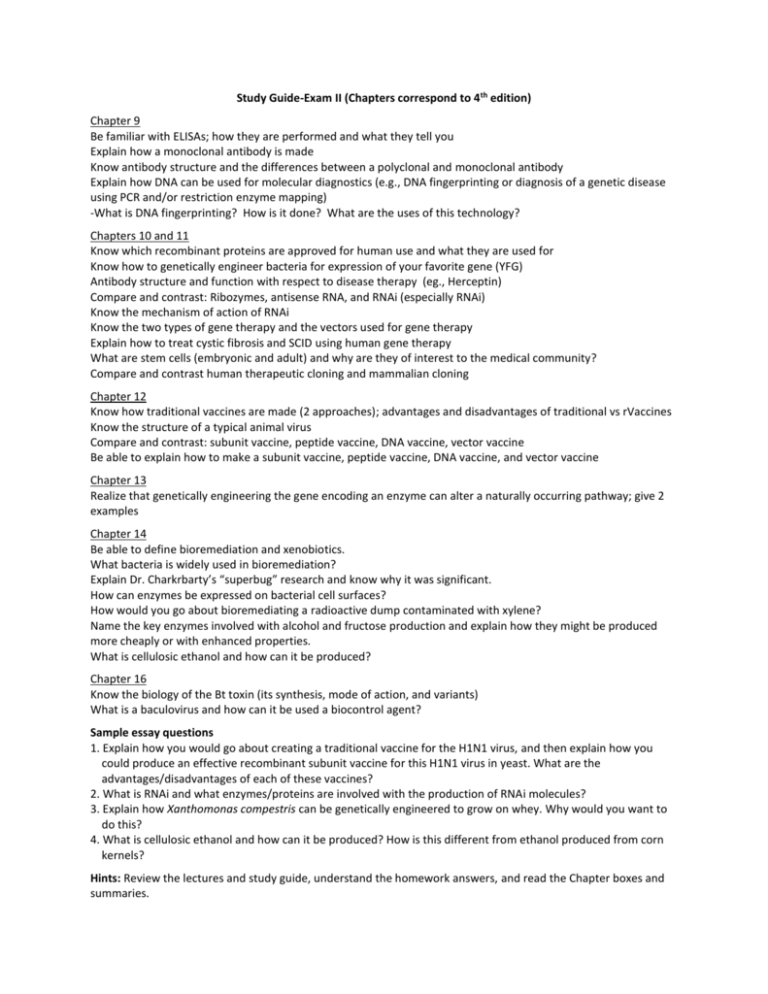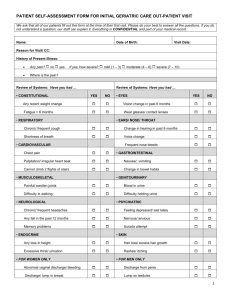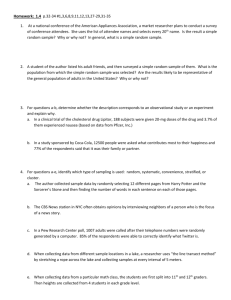Exam II Study Guide
advertisement

Study Guide-Exam II (Chapters correspond to 4th edition) Chapter 9 Be familiar with ELISAs; how they are performed and what they tell you Explain how a monoclonal antibody is made Know antibody structure and the differences between a polyclonal and monoclonal antibody Explain how DNA can be used for molecular diagnostics (e.g., DNA fingerprinting or diagnosis of a genetic disease using PCR and/or restriction enzyme mapping) -What is DNA fingerprinting? How is it done? What are the uses of this technology? Chapters 10 and 11 Know which recombinant proteins are approved for human use and what they are used for Know how to genetically engineer bacteria for expression of your favorite gene (YFG) Antibody structure and function with respect to disease therapy (eg., Herceptin) Compare and contrast: Ribozymes, antisense RNA, and RNAi (especially RNAi) Know the mechanism of action of RNAi Know the two types of gene therapy and the vectors used for gene therapy Explain how to treat cystic fibrosis and SCID using human gene therapy What are stem cells (embryonic and adult) and why are they of interest to the medical community? Compare and contrast human therapeutic cloning and mammalian cloning Chapter 12 Know how traditional vaccines are made (2 approaches); advantages and disadvantages of traditional vs rVaccines Know the structure of a typical animal virus Compare and contrast: subunit vaccine, peptide vaccine, DNA vaccine, vector vaccine Be able to explain how to make a subunit vaccine, peptide vaccine, DNA vaccine, and vector vaccine Chapter 13 Realize that genetically engineering the gene encoding an enzyme can alter a naturally occurring pathway; give 2 examples Chapter 14 Be able to define bioremediation and xenobiotics. What bacteria is widely used in bioremediation? Explain Dr. Charkrbarty’s “superbug” research and know why it was significant. How can enzymes be expressed on bacterial cell surfaces? How would you go about bioremediating a radioactive dump contaminated with xylene? Name the key enzymes involved with alcohol and fructose production and explain how they might be produced more cheaply or with enhanced properties. What is cellulosic ethanol and how can it be produced? Chapter 16 Know the biology of the Bt toxin (its synthesis, mode of action, and variants) What is a baculovirus and how can it be used a biocontrol agent? Sample essay questions 1. Explain how you would go about creating a traditional vaccine for the H1N1 virus, and then explain how you could produce an effective recombinant subunit vaccine for this H1N1 virus in yeast. What are the advantages/disadvantages of each of these vaccines? 2. What is RNAi and what enzymes/proteins are involved with the production of RNAi molecules? 3. Explain how Xanthomonas compestris can be genetically engineered to grow on whey. Why would you want to do this? 4. What is cellulosic ethanol and how can it be produced? How is this different from ethanol produced from corn kernels? Hints: Review the lectures and study guide, understand the homework answers, and read the Chapter boxes and summaries.







